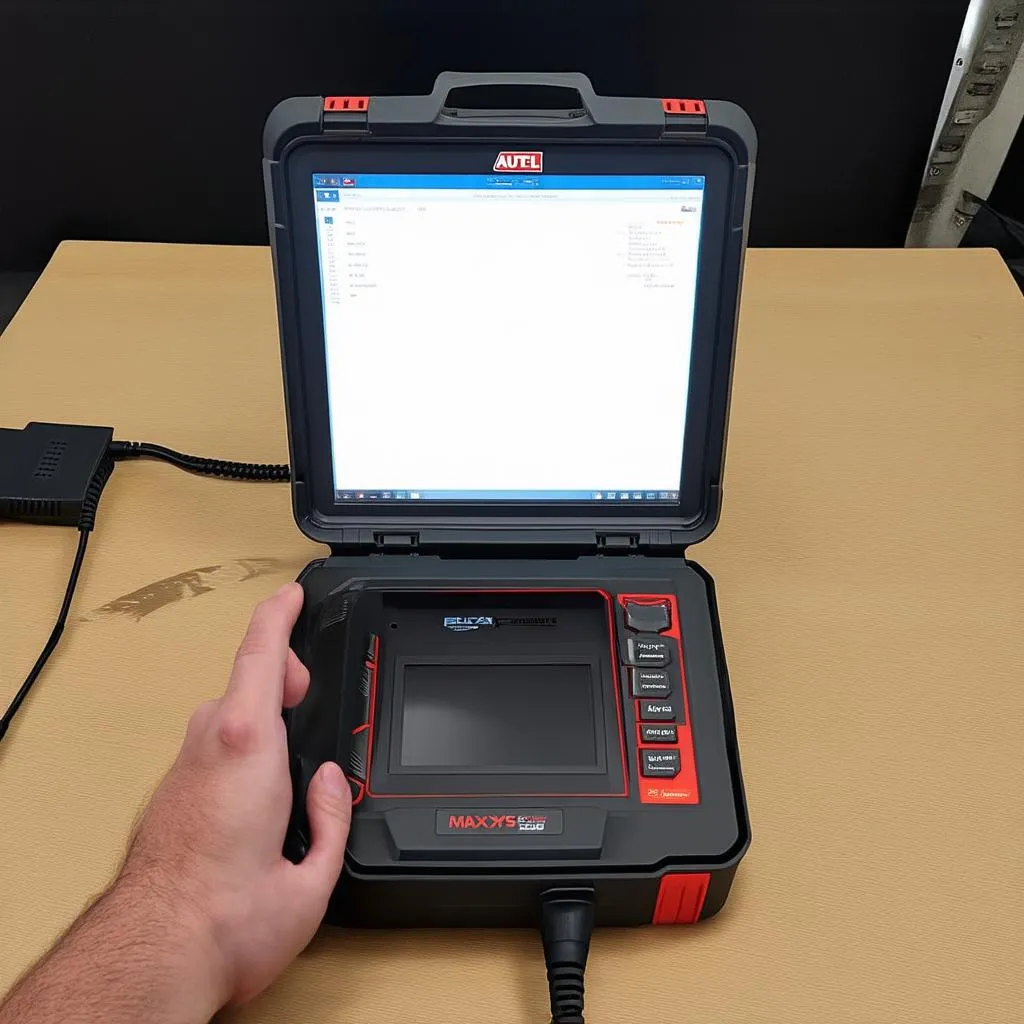Have you ever wondered how to update or reprogram a car’s electronic control unit (ECU) without needing to visit the dealership? You’re not alone. This question is particularly common among car enthusiasts and mechanics who want to fine-tune their vehicles or fix specific issues.
But before diving into the technicalities of Autel module programming, let’s consider the broader implications of this practice. Some might say it’s like “unlocking the secrets of the car’s soul.” After all, ECUs control various essential functions, from engine performance to safety systems. So, understanding how to reprogram them gives you a deeper level of control and can be a true game-changer for both DIY car enthusiasts and professional mechanics.
What is Autel Module Programming?
Autel module programming refers to the process of using Autel diagnostic tools to update or reprogram various electronic control modules (ECUs) within a car. This process is critical for various reasons, including:
- Updating software: New software releases often contain bug fixes, performance enhancements, or additional features. Autel module programming allows you to update these modules and keep your car running smoothly.
- Replacing modules: When a module fails or needs replacement, the new module often requires programming to match the vehicle’s specific configuration.
- Modifying parameters: Some ECUs allow specific parameters to be adjusted to optimize performance or address specific issues.
Why is Autel Module Programming Important?
Imagine yourself driving your car and suddenly encountering a persistent issue with the ABS system. Or perhaps you want to modify your engine’s performance to achieve better fuel efficiency. These scenarios highlight the importance of Autel module programming.
- Enhanced Performance: Autel module programming allows you to fine-tune various vehicle systems, potentially leading to improved performance, fuel efficiency, or smoother driving experience.
- Troubleshooting Issues: It provides a powerful tool for diagnosing and fixing a wide range of car issues, offering an alternative to expensive dealership visits.
- Customizations: Autel module programming can be used to customize various aspects of your car, such as adding new features or modifying existing ones.
Frequently Asked Questions About Autel Module Programming
Can I program any car module with an Autel scanner?
Not all Autel scanners can program all modules. The specific modules supported by a scanner depend on its model and the vehicle’s make and model year. It’s crucial to check the Autel scanner’s compatibility list to ensure it supports the module you want to program.
Is Autel module programming safe for my car?
Autel module programming is generally safe when done correctly. However, it’s crucial to use a reliable scanner and follow the manufacturer’s instructions carefully. Improper programming can damage the module or even compromise the vehicle’s safety.
Can I do Autel module programming myself?
While many Autel scanners are user-friendly, module programming can be a complex procedure requiring technical knowledge. If you’re not comfortable with automotive electronics or lack the necessary experience, it’s best to seek professional assistance from a certified mechanic.
How much does Autel module programming cost?
The cost of Autel module programming varies depending on the specific module being programmed, the complexity of the procedure, and the mechanic’s labor rates. However, it’s typically cheaper than similar services offered by dealerships.
Getting Started with Autel Module Programming
Choosing the Right Autel Scanner
The first step is selecting the appropriate Autel scanner for your needs. Autel offers various scanners, from basic models to more advanced ones like the Maxisys Elite, each designed for different levels of functionality and vehicle compatibility.
Understanding the Process
Once you have the scanner, you’ll need to learn how to use it properly. Autel provides comprehensive user manuals and online resources that can guide you through the programming process.
Tips for Success
- Research: Thoroughly research the specific module you want to program, including its functions, limitations, and any potential risks.
- Backup: Always create a backup of the module’s original data before making any changes. This allows you to revert to the original settings if necessary.
- Patience: Autel module programming can be time-consuming, especially for complex modules. Be patient and follow the steps carefully.
- Professional Assistance: If you’re unsure about any aspect of the process, don’t hesitate to seek professional help.
Autel Module Programming: A Tool for Empowerment
Autel module programming offers a powerful way to enhance your car’s performance, troubleshoot issues, and customize its features. It empowers both DIY car enthusiasts and professional mechanics to take control of their vehicles. While it requires technical knowledge and careful execution, the potential rewards are substantial.
 autel maxisys elite
autel maxisys elite
However, remember that like any powerful tool, it’s crucial to use it responsibly and ethically. Always prioritize safety, follow manufacturer guidelines, and seek professional assistance when needed.
Beyond Autel: Exploring the Possibilities
While Autel module programming is a popular option, other diagnostic tools and software solutions exist. Exploring these alternatives can provide valuable insights and broaden your understanding of automotive diagnostics.
 ecu programming
ecu programming
Stay Connected
We hope this guide has given you a better understanding of Autel module programming. If you have any questions or need further assistance, please don’t hesitate to reach out to our team. We’re here to help you unlock the full potential of your car’s electronic systems.
Contact Us: For expert advice and support, connect with our team on WhatsApp at +84767531508. We’re available 24/7 to help you navigate the world of automotive diagnostics.
Let’s keep the conversation going! Leave a comment below and share your experiences with Autel module programming or any other automotive diagnostic tools you’ve used.


